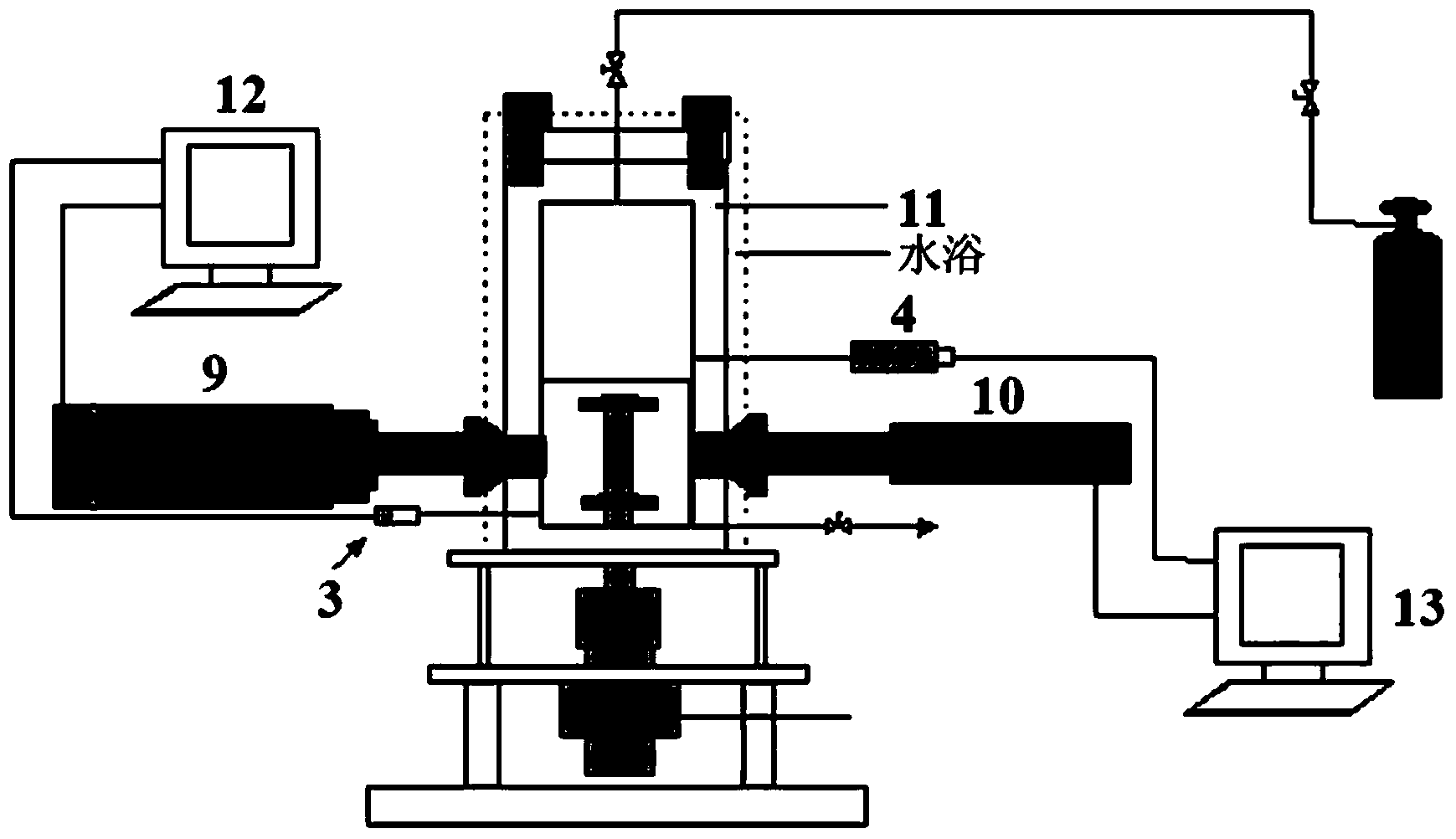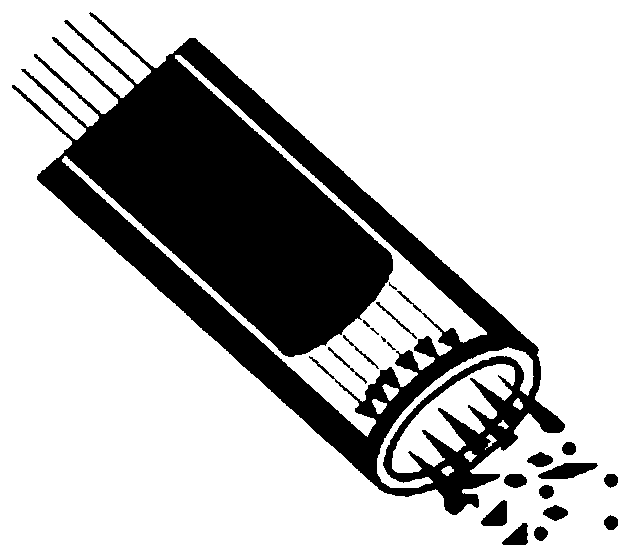Non-ionic compound gas hydrate anti-agglomerant
A gas hydrate and composite technology, which is applied in the direction of drilling composition, gas/liquid distribution and storage, pipeline system, etc., can solve the problems of insignificant anti-polymerization effect, poor biodegradability, high price, etc., and achieve good Application prospect, low addition amount, high supercooling effect
- Summary
- Abstract
- Description
- Claims
- Application Information
AI Technical Summary
Problems solved by technology
Method used
Image
Examples
Embodiment 1
[0044] This example provides a nonionic composite gas hydrate antipolymerization agent, which is composed of alkyl glycoside nonionic surfactant APG1214 and polyol type nonionic surfactant Span20 in a mass ratio of 1:1 Than obtained by mixing.
[0045] Apply the above-mentioned non-ionic composite gas hydrate antipolymerization agent to the oil-gas-water three-phase mixed transportation system with a water content of 10% (calculated based on the sum of the volumes of water and oil), and analyze the The use effect of non-ionic composite gas hydrate antipolymerization agent was evaluated.
[0046] In this example, a high-pressure fully transparent sapphire reactor is used for the application evaluation experiment. The structure of the high-pressure fully transparent sapphire reactor is as follows figure 1 shown. The reactor is a common equipment for evaluating the inhibitory effect of gas hydrate antipolymerization agent, mainly including high-pressure sapphire reactor body 1,...
Embodiment 2
[0059] This embodiment provides a nonionic composite gas hydrate antipolymerization agent, which is composed of alkyl glycoside nonionic surfactant APG1214 and polyol type nonionic surfactant Span20 in a mass ratio of 0.25:1 Than obtained by mixing.
[0060] In this example, the high-pressure fully transparent sapphire reactor described in Example 1 is used to conduct an application evaluation experiment, and the specific experimental process is as described in Example 1.
[0061] In this example, the oil-water system in the reactor is composed of 1.5mL of deionized water and 13.5mL of -20# diesel oil, that is, a mixed transportation system with a water content of 10% (calculated based on the sum of the volumes of water and oil) , the amount of antipolymerization agent added in this embodiment is 3.0% of the water mass in the system, and the composition of the gas introduced is shown in Table 1.
[0062] During the whole experiment process of this example, the gas hydrate par...
Embodiment 3
[0064] This example provides a nonionic composite gas hydrate antipolymerization agent, which is composed of alkyl glycoside nonionic surfactant APG1214 and polyol type nonionic surfactant Span20 in a mass ratio of 0.5:1 Than obtained by mixing.
[0065] In this example, the high-pressure fully transparent sapphire reactor described in Example 1 is used to conduct an application evaluation experiment, and the specific experimental process is as described in Example 1.
[0066] In this example, the oil-water system in the reactor is composed of 1.5mL of deionized water and 13.5mL of -20# diesel oil, that is, a mixed transportation system with a water content of 10% (calculated based on the sum of the volumes of water and oil) , the amount of antipolymerization agent added in this embodiment is 3.0% of the water mass in the system, and the composition of the gas introduced is shown in Table 1.
[0067] During the whole experiment process of this example, the gas hydrate particl...
PUM
| Property | Measurement | Unit |
|---|---|---|
| height | aaaaa | aaaaa |
Abstract
Description
Claims
Application Information
 Login to View More
Login to View More - R&D
- Intellectual Property
- Life Sciences
- Materials
- Tech Scout
- Unparalleled Data Quality
- Higher Quality Content
- 60% Fewer Hallucinations
Browse by: Latest US Patents, China's latest patents, Technical Efficacy Thesaurus, Application Domain, Technology Topic, Popular Technical Reports.
© 2025 PatSnap. All rights reserved.Legal|Privacy policy|Modern Slavery Act Transparency Statement|Sitemap|About US| Contact US: help@patsnap.com



